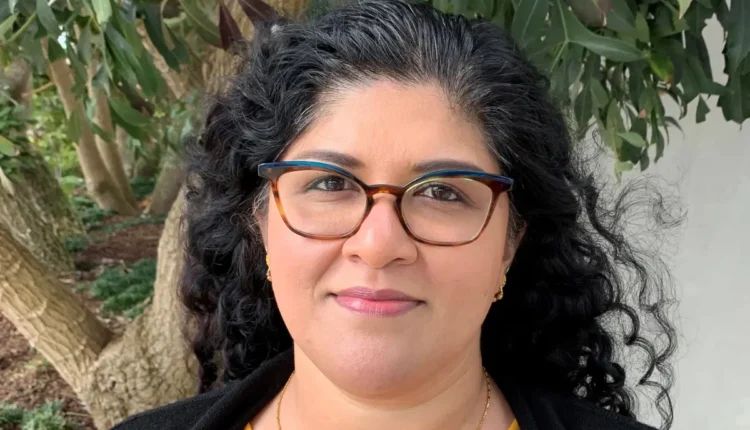Sarah Dutt is a visionary artist who embodies the rich tapestry of cultures that define her unique identity. Born in New Zealand, Dutt’s artistic journey is deeply informed by her dual heritage, encompassing both her Māori roots (Ngāi Tai, Whānau-ā-Apanui, Ngāti Porou) and Fijian-Indian ancestry. Her work, rooted in the intersection of these cultures, speaks to the power of diversity, history, and identity, and she has made an indelible mark in the New Zealand art world through her mixed-media practice.
The Power of Heritage and Storytelling in Art
Dutt’s life story is a testament to the power of embracing heritage and using it as a means of expression. Her father’s lineage traces back to Uttar Pradesh, India, while her great-grandfather moved from India to Fiji in the late 1800s during the Girmit era, a period when Indian indentured laborers were sent to Fiji under British colonial rule. Her grandmother, born in Trinidad, later emigrated to Fiji in 1906. It was Dutt’s father who brought this rich cultural tapestry to New Zealand in the 1960s, where Sarah was born.
Her mother’s Māori ancestry from New Zealand’s East Coast further enriches this cultural narrative, grounding Dutt’s identity in the indigenous history of Aotearoa. This dynamic fusion of Māori and Indian heritage forms the foundation of Dutt’s creative work and personal journey.
An Artist with a Purpose
Sarah Dutt‘s journey into the art world began in the 1990s when she attended Elam School of Fine Arts in Auckland. She completed her Masters in Fine Arts with Honours in 2005, further developing her creative voice. Alongside her career as an artist, she has worked in education, imparting her knowledge and passion for art to others since 2003. Dutt has always believed that art transcends boundaries and serves as a powerful tool for communication, which is evident in her body of work.
Her art practice, informed by the visual cultures of both Māori and Indian traditions, embraces a distinctive mixed-media style that explores identity, history, and belonging. She masterfully integrates Māori ta moko and kowhaiwhai motifs with Indian henna and rangoli designs, creating a dialogue between these rich cultural heritages. Her artwork is not just a reflection of her dual identity, but also a means of bridging the gaps between cultures and generations.
Founding The Kshetra Collective
One of Sarah Dutt’s significant achievements is co-founding The Kshetra Collective, a group of artists in New Zealand of Indian heritage. The Collective provides a platform for Indian diaspora artists to share their stories, perspectives, and artistic visions, often overlooked in mainstream New Zealand art spaces.
Sarah Dutt’s role as a founder underscores her commitment to fostering inclusivity and creating spaces where diverse voices can be heard. The Collective’s work aligns with Dutt’s vision of showcasing the richness and diversity of the Indian diaspora, particularly in Aotearoa.
Art as a Bridge Between Cultures
In 2009, Sarah Dutt exhibited a striking series of artworks titled Tara at the Māngere Arts Centre – Ngā Tohu o Uenuku. This series, which included paintings and installations, drew upon the visual and mythological connections between Māori mythology and Hinduism. Through this work, Dutt highlighted the deep, symbolic connections between these two ancient cultures, using art as a medium to weave their shared narratives.
Sarah Dutt’s commitment to celebrating her heritage came to the fore in 2022, when The Kshetra Collective curated an exhibition at the Auckland War Memorial Museum titled A Place to Stand. This landmark exhibition, the first of its kind, showcased contemporary Indian New Zealand artists.
Sarah Dutt’s contribution to the exhibition included her painting titled “Where I belong, Toku Tuurangawaewae, Swadesh Hai, Mera.” This poignant piece explores themes of cultural, physical, and spiritual belonging, offering a deeply personal reflection on Dutt’s sense of identity as a woman of Māori and Fijian-Indian descent.
In 2023, Sarah Dutt participated in the exhibition Invisible Narratives: Contemporary Indian Creatives from Aotearoa at the New Zealand Portrait Gallery Te Pūkenga Whakaata. Her work, “All in a Day’s Work” (2023), was a powerful statement on the history of indenture, reflecting the stories of Indian laborers in Trinidad and Fiji. Through these deeply personal and historically significant artworks, Dutt continues to use her platform to explore the complexities of identity and cultural history.
Also Read:Colin Mathura-Jeffree: Bridging Fashion, Film, and Humanitarian Causes

